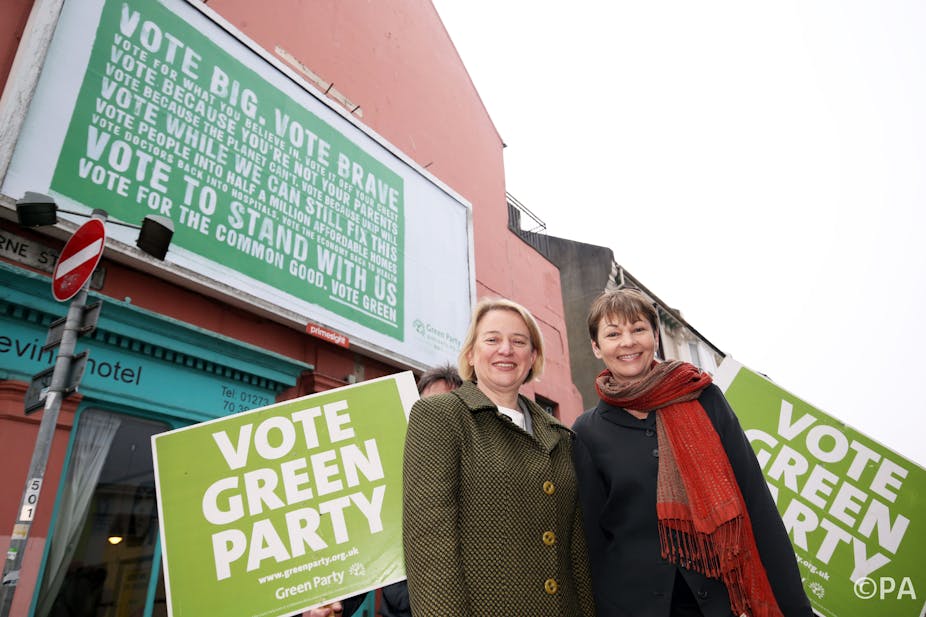The Green Party has published an 84-page tome setting out its policies for the 2015 election in detail. The main message is that the Greens are offering a radical alternative to the mainstream parties.
At first glance, the environmental message gets top billing. The chapters on the Earth and energy and climate change are particularly prominent. There are pledges to make huge investments in renewable energy and home insulation, and numerous progressive environmental measures are littered throughout the document.
Yet the manifesto also sets out an uncompromisingly left-wing tax-and-spend programme. The headline spending commitments are a litany of promises that we might associate with (very) Old Labour. The Greens want to increase spending to almost half of national income; creating 1 million jobs paying at least a living wage.
They would increase the minimum wage to a living wage of £10 per hour by 2020, double child benefit and introduce a Citizen’s Pension for everyone. Tuition fees and the bedroom tax would be scrapped and the railways renationalised. Rail fares would be immediately cut by 10%. Indeed, the manifesto as a whole contains a remarkably long shopping list of ideas designed to appeal to a wide range of people.
Significantly, these lavish promises will be paid for by huge redistributionist tax increases, although at the launch party leader Natalie Bennett preferred the less controversial term “re-balancing”. The Greens make no bones about who will pay for it – they will introduce a 2% wealth tax on the top 1%; a Robin Hood tax on financial transactions; increase corporation tax from 20% to 30%; increase fuel duty on aviation; impose an additional 60% top rate income tax band and a plethora of other measures.

But two of the biggest sources of revenue are the proposals to abolish the upper threshold for employee National Insurance payments, so that everyone earning above £42,380 would pay more, and reducing tax relief on pensions. These are policies that might put off middle class voters tempted to vote Green.
All the parties have promised to raise ambitious sums from stopping tax avoidance, but the Green target of £30 billion by 2019 trumps everyone else. And, unfortunately, it is hopelessly unrealistic.
Perhaps the most revealing part of the manifesto is the financial appendix – the “detailed” costings promised by Natalie Bennett. Obviously one vitally important way of judging what a party stands for is to see where the money is going to go: the appendix shows clearly that the Greens will spend it on their headline anti-austerity economic and social measures rather than on environmental measures.
The Green Party, like its sister parties across Europe, is firmly liberal and its manifesto contains a wide range of small but significant equality and diversity measures to support women, ethnic minorities and a range of disadvantaged groups. These include making anonymous CVs the norm to prevent discrimination by potential employers.
Inevitably, that provides scope for opponents to zone in on particularly controversial suggestions to make that the focus of news coverage. Commentators have already jumped on the Green promise to review all sporting events involving live animals as code for banning the Grand National. We are sure to see similar attacks on other policies.
But the manifesto contains so many ideas that it would be surprising if at least some of the more practical measures don’t get adopted as policy in the next parliament, whichever party (or group of parties) wins the election.

